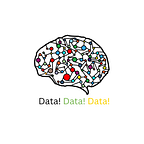Machine Learning’s Battle of the Titans: Batch vs Online Learning
Machine learning is a rapidly growing field that has the potential to revolutionize the way we live and work. There are two main approaches to training machine learning models: batch learning and online learning. In this article, we will explore the differences between batch and online learning and compare their pros and cons to help you choose the right approach for your problem.
Batch Learning
Batch learning is a type of machine learning algorithm where the model is trained on the entire dataset at once. Batch learning algorithms are best suited for problems where the entire dataset is available and there is no need for the model to update its parameters in real-time.
Pros
- Accurately identify patterns in the entire dataset, leading to higher accuracy
- Simple to implement and requires fewer computational resources
Cons
- Can become impractical for large and dynamic datasets
- Cannot handle real-time data and update parameters in real-time
Example: If you have a large dataset of images of handwritten digits, you can use batch learning to train a classifier to recognize digits with higher accuracy. However, if you are building a recommendation system that needs to learn from the user’s preferences in real-time, batch learning might not be a suitable approach as the model cannot update its parameters in real-time.
Online Learning
Online learning is a type of machine learning algorithm where the model is trained on individual samples, one at a time. Online learning algorithms are best suited for real-time applications where the data is streaming and the model needs to continuously update its parameters.
Pros
- Can handle real-time data and update parameters in real-time
- Scalable to large and dynamic datasets
Cons
- Lower accuracy compared to batch learning algorithms
- Requires more computational resources and can be complex to implement
Example: If you are building a recommendation system that needs to learn from the user’s preferences in real-time, online learning would be a suitable approach as the model can continuously update its parameters based on the user’s actions. However, if you have a large dataset of images of handwritten digits, online learning might not achieve the same level of accuracy as batch learning.
Conclusion
In conclusion, batch learning and online learning are two main approaches to training machine learning models, each with its own advantages and disadvantages. The choice between batch and online learning depends on the specific requirements of your problem, and it is important to choose the right approach to maximize accuracy and efficiency.
Key Takeaways:
- Batch learning trains the model on the entire dataset at once
- Online learning trains the model on individual samples, one at a time
- Batch learning is best for problems with a large and static dataset
- Online learning is best for real-time applications with streaming data
- Both approaches have their own pros and cons, and the choice depends on the specific requirements of the problem.
For more exciting insights into the world of data and machine learning, be sure to follow me on Medium and connect with me on LinkedIn. I publish articles regularly and would love to continue the conversation with you!
